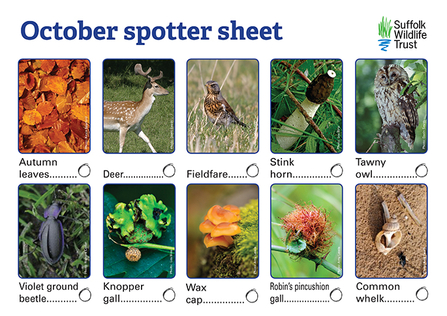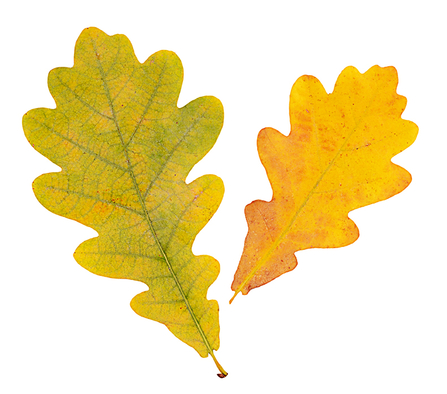
Autumn colours
Woodlands and hedgerows look spectacular at this time of year, with the bronze horse chestnut leaves, green and yellow of ash, orange and bronze of beech, golden of silver birch and bright yellow of the field maple. Conkers will also be falling to the ground around now, great fun to collect and compete with. Sloes will also be looking their best, as the blackthorn leaves fall from the bushes.
Great nature reserves for autumn colours are Captain's Wood, Bradfield Woods, Bonny Wood, Groton Wood and Reydon Wood.
Redwings and fieldfares migrating
Redwings and fieldfares start arriving in the UK at this time of year. They breed in Iceland or Scandinavia, then come to the UK in search of food. These winter thrushes form large flocks which feast on berry-laden bushes in hedgerows, woodland, parks and playing fields.
Fieldfares are sociable birds and can be seen in flocks of over 200 birds roaming through the countryside. They may venture into gardens when there is snow cover or it is a severe winter. If disturbed they respond with a loud chattering noise.
Redwings migrate here at night - on clear evenings listen out for their 'tseep' call overhead. They can often be spotted in flocks with fieldfares, moving from bush to bush looking for food.
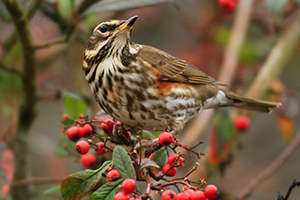
Redwing by Jon Hawkins
Redwings have a dark brown back and white underneath, with a black-streaked breast and orange-red on sides and underwing. This species also have a white eyebrow stripe and dark brown cheeks. Similar to the song thrush, but for the white eyebrow stripe and red patch under the wing.
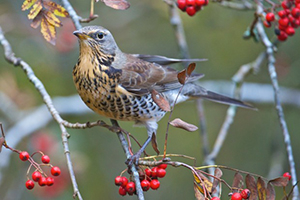
Fieldfare by Richard Bowler
Fieldfares have a yellowy breast with black streaks, a chestnut-brown back, and a black tail. The head and rump are pale grey, and the wings dark brown.
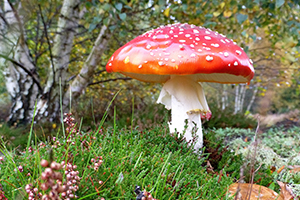
Fly agaric by David O'Keeffe
Fungi
Often brightly coloured, these life forms are neither plant nor animal, and come in a fantastic array of different shapes. Their names are just as varied and strange, for instance jelly ear fungus, Dryad's saddle, beef steak, stinkhorn and fly agaric amongst them!
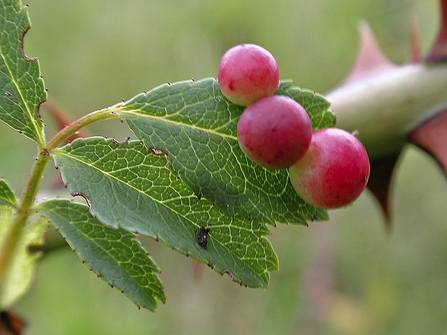
Spiked pea (sputnik) galls by Les Binns
Galls
Galls look a lot like fruit, but they are in fact growths which happen due to parasites like fungi, insects or mites. Galls are both the home and the food source for the maker of the gall.
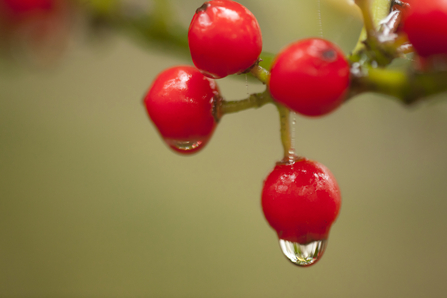
Berries by Paul Hobson
Nuts and berries
Nuts and berries are fruit produced by trees. They are often eaten by birds and mammals which helps disperse the seeds inside. Look at the reserves on the left for clues of where to find some.

